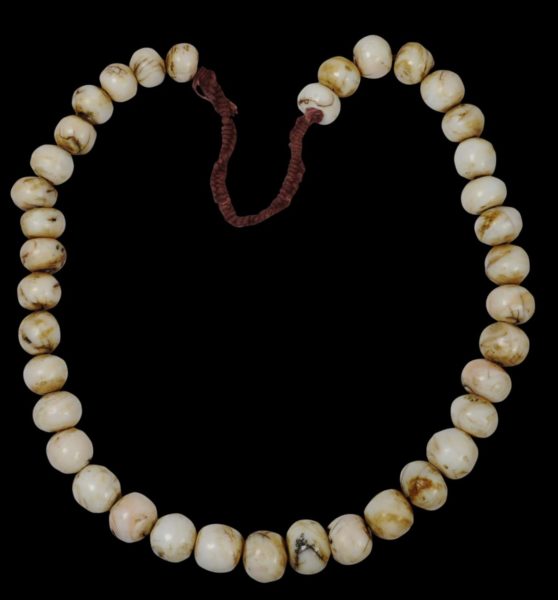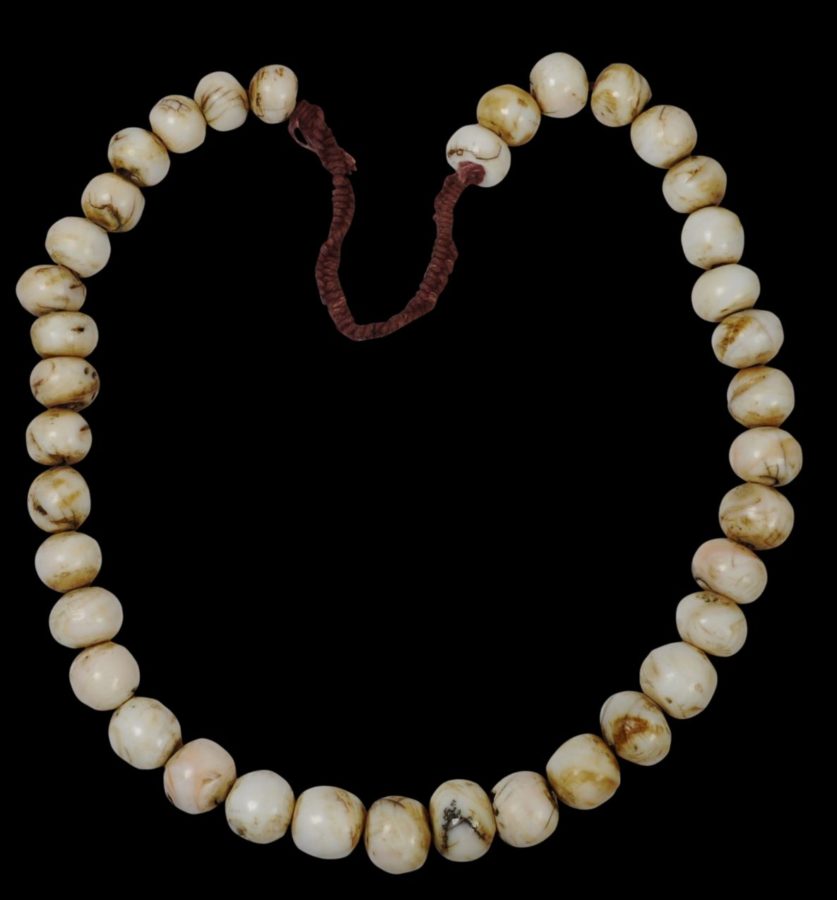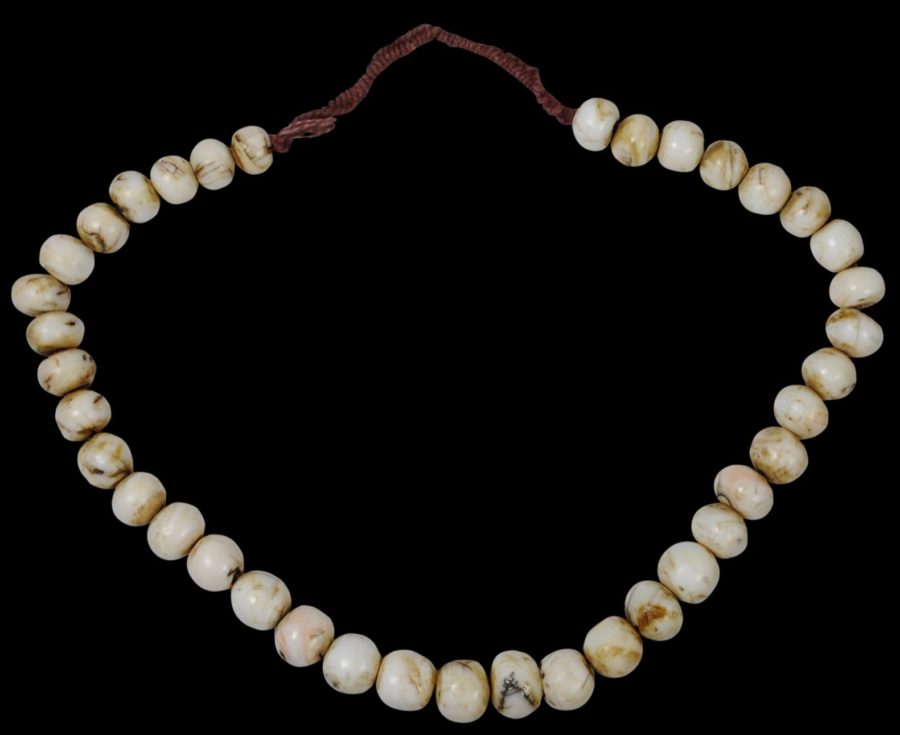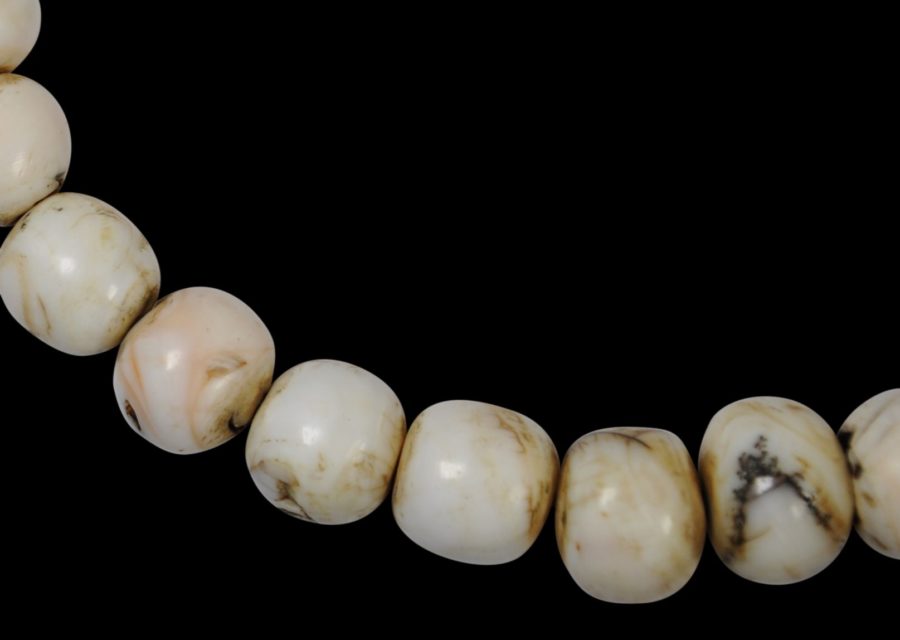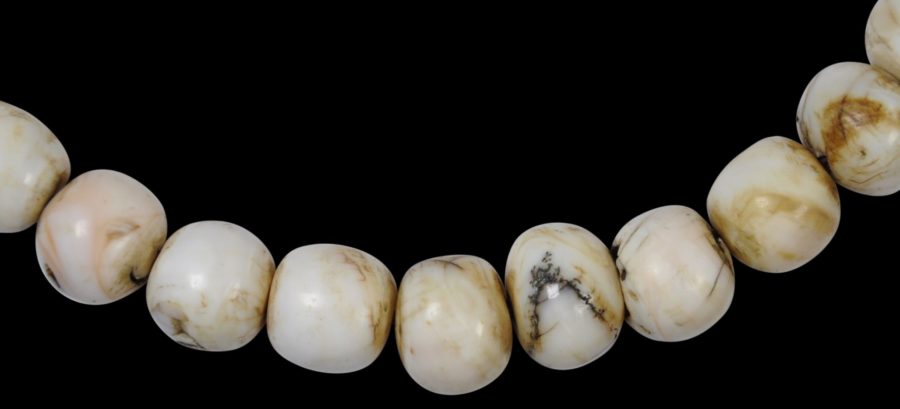Enquiry about object: 6247
Naga Chank Shell Bead Necklace
Naga People, Eastern India/Western Burma 19th century
length: 60cm, weight: 216g
Provenance
private collection, London
This necklace most probably from the Naga people (although similar shell beads were used in Tibet) is outstanding for its age, wear and patina. The patina and wear suggest significant wear from age and handling. Such beads were considered heirloom pieces. It is conceivable that this set might be as early as the 18th century.
The necklace comprises 38 beads on native cotton twine. Each of the beads is largely spherical and has been made from chank shell (Turbinella pyrum) fished from the waters around India,
that has varying cream and dark colouring. (The shell often is misidentified as conch shell [Allen, 2003].)
The unevenness of shape and size of the beads adds to their attractiveness.
Each bead has been hand drilled with a hole to allow it to be threaded.
Necklaces featuring conch shell components were a sign of wealth among the Naga peoples. Typically, the shells were traded into the Naga lands from the Bay of Bengal.
The necklace is from an old UK collection and was acquired in the early 1970s. It is stable and wearable.
References
Allen, J.D., ‘Chank shell – Ritual objects and beads’, in The Bead Museum Quarterly, Vol. 13, No 2., June 2003.
Allen, Jamey D., pers. comm., December 2019.
Jacobs, J., The Nagas: Hill Peoples of Northeast India, Thames & Hudson, 1990.
Shilu, A., Naga Tribal Adornment: Signatures of Status and Self, The Bead Museum, Washington, 2003.
Untracht, O., Traditional Jewelry of India, Thames & Hudson, 1997.


